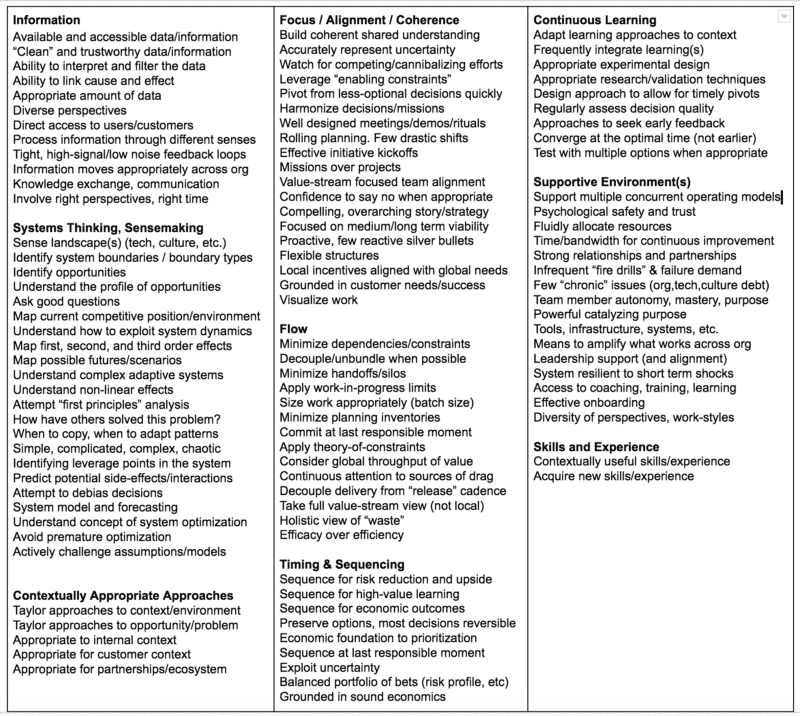On a very high level, there are two things needed for a successful product/company:
- High decision quality
- High decision velocity …both under conditions of uncertainty (we hope, otherwise there wouldn’t be much upside). A product is a value-creation system — a decision factory. Every decision counts. You have to out-decide the competition.
Note that #2 is not related to delivery output. The decision to not ship or to delay shipping can be as “good” as the decision to ship. Decision velocity matters because you can’t wait for perfect information (in most cases). Some of your “good” decisions will end up “failing”, and some of your not-so-good decisions will end up “working”. But in the long run — provided you don’t run out of money — reasonably good and timely decisions will prevail.
A product manager’s job is to foster conditions conducive to high decision quality and high decision velocity (at all levels). Except in rare cases, this will not involve making unilateral decisions. Rather, the nature of the product manager’s job lends itself to having an organization-wide reach and perspective which proves to be invaluable when it comes to providing context.
Better Decisions
Decision quality and decision velocity can be improved with:
- Timely access to information
- Sense-making, systems thinking
- Using contextually appropriate approaches
- Focus, alignment, and coherence
- Appropriate timing and sequencing decisions
- Flow
- Supportive, healthy environment
- …and contextually appropriate skills/experience These factors are all related and dependent. You need information to make sense of things and form a model of the system. A model of the system helps you decide which approaches to use. Skills and experience in the appropriate context helps. You can’t do everything. Doing things in a certain order matters. Focus helps you get flow in the system (intervention flow, information flow). Information flow drives timely access to information. Finally…you need things like psychological safety and trust or the whole thing falls apart.
This may all seem like common sense, but what mechanisms does your organization have in place to continuously improve in this regard?
Patterns
You can break the high level patterns into a lots of smaller patterns.
 Making Better Decisions (John Cutler)Importantly, we deal with all sorts of nested decisions. Every line of code is a set of decisions. Every design, kickoff, change in strategy, fundraising event, and reorg…are all decisions. We tend to see odd hierarchies of decisions (e.g. “strategy and execution”)
Making Better Decisions (John Cutler)Importantly, we deal with all sorts of nested decisions. Every line of code is a set of decisions. Every design, kickoff, change in strategy, fundraising event, and reorg…are all decisions. We tend to see odd hierarchies of decisions (e.g. “strategy and execution”)
— but in knowledge work, they are all important streams of decisions.
Go Forth!
So, the simple message here is to ask whether are you fostering an environment conducive to high decision quality and high decision velocity. Are you only celebrating successful decisions? Do you have the information necessary to make good decisions? Is your team reflecting on decision quality?
That last one is key.
Food for thought.